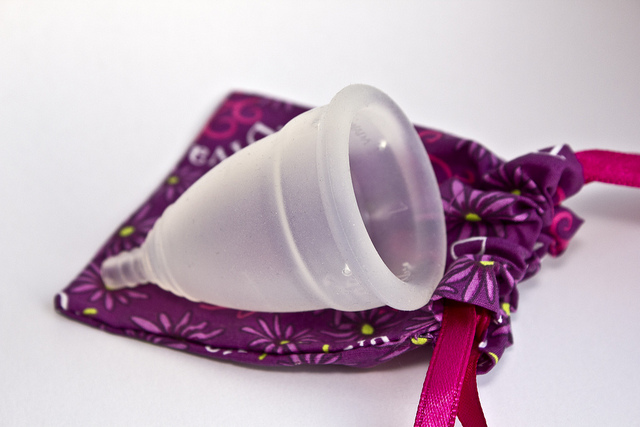
With no end in sight to tampon tax, are reusable sanitary products the way forward?
Kuba Shand Baptiste
04 Nov 2015
Like most efforts towards the eradication of social injustices, it is often the so-called ‘non-essential’ obstacles that are the first to come under criticism.
I’m referring of course, to the five percent tax on sanitary protection products, which, much to the bemusement of everyone who’s ever had the pleasure of using a tampon or a pad, are currently classed by HMRC as “non-essential, luxury items”, a classification which is still being contested by Labour MPs, as well as women’s rights activists across the country.
In the 1970s, for many second-wave feminists, the fight for intersectional feminism – feminism which recognises the need to account for multiple grounds of identity – was considered a ridiculous feat that took away from the bigger issues at hand in order to pander to the complaints of a select few.
The fight against tampon tax is often given similar treatment. It is branded as yet another frivolous gripe, long considered a non-issue of the “feminazi” persuasion, whose “wide-ranging” access to freedoms, no matter how new or miniscule, have left them spoiled, causing these radical women to look for injustices in everything.
Except that much like intersectionality was in the 1970s (and still is to a certain extent today), the five percent tax on tampons really is a big deal. Colossal actually.
As highlighted by Guardian US columnist Jessica Valenti last year, for low-income and homeless women globally, a lack of access to sanitary products can be significantly debilitating. It can cause girls to miss school or paid work because they are forced to stay at home as a means of dealing with periods.
For women in prison too, sanitary care is notoriously administered poorly, as suggested in a study conducted by the Prison Observatory in conjunction with the Criminal Justice Programme of the European Union: “women’s sanitary needs are not always remembered or respected, particularly during long transports to and from prison” in the UK.
While at present, there are no quick or all-encompassing solutions to the tampon tax problem, there are a number of options for those who, like me, relish the thought of saving a great deal of the money that the average menstruating woman spends on sanitary products. Reusable sanitary items are one of them.
As reported widely in September, women who have periods are likely to spend more than £18,000 on sanitary products in their lifetime, and with the government’s recent rejection of Labour’s move to amend the Finance Bill, costs are unlikely to drop any time soon, leaving many with no choice but to look for alternatives.
In an age where periods are regarded with a lot less squeamishness, and body positivity is widely celebrated, it’s not surprising that products such as washable sanitary towels, menstrual cups and sponges – which were previously thought of as archaic, have had somewhat of a revival in recent years.
Menstrual cups in particular, as well as new products such as THINX, a new “period panty” that claims to hold “two tampons’ worth of liquid”, have become particularly popular of late – giving women and businesses alike the opportunities and inspiration to benefit from a very clear gap in the sanitary product market.
Prior to trying reusable sanitary products myself, paying £4 a month for tampons and pads was the only option available to me when it came to dealing with my periods, despite the fact that, as a low-income, part-time graduate with a number of other expenses, I could barely afford to.
I hadn’t been blessed with a relatively painless, or a “barely there” cycle like many of my friends, which often meant that wearing both a tampon and a pad was necessary for about four days of my eight day cycle, all of which caused me to regard my period as a relentless aggressor, intent on assaulting my insides and robbing me blind – until I tried the Mooncup.
Before trying one for myself, I’d come across the concept of menstrual cups in articles by the sorts of people who had the time and energy to make their own almond milk, and had written it off as something that someone like me, just about organised enough to make my own tea in the morning, wouldn’t be able to get the hang of. But at a flat fee of £20 for a product that can last for years, it was the most reliable and safe form of sanitary protection that I’d come across for a while.
The Mooncup, an eco-friendly, bell-shaped silicone device, sits by the cervix after insertion, can be left in place for up to 12 hours, and on execution has been known to ease stomach cramps and leaking – as explained in this decidedly painful “Tampon vs. Mooncup” video by the people at Mooncup.
Though still subject to VAT, like most forms of reusable sanitary protection are, perhaps now that women who menstruate are opting for long-lasting solutions to the monthly costs of sanitary protection, others, and hopefully the government too, will recognise the importance and marketability of cheaper and sustainable sanitary products.









